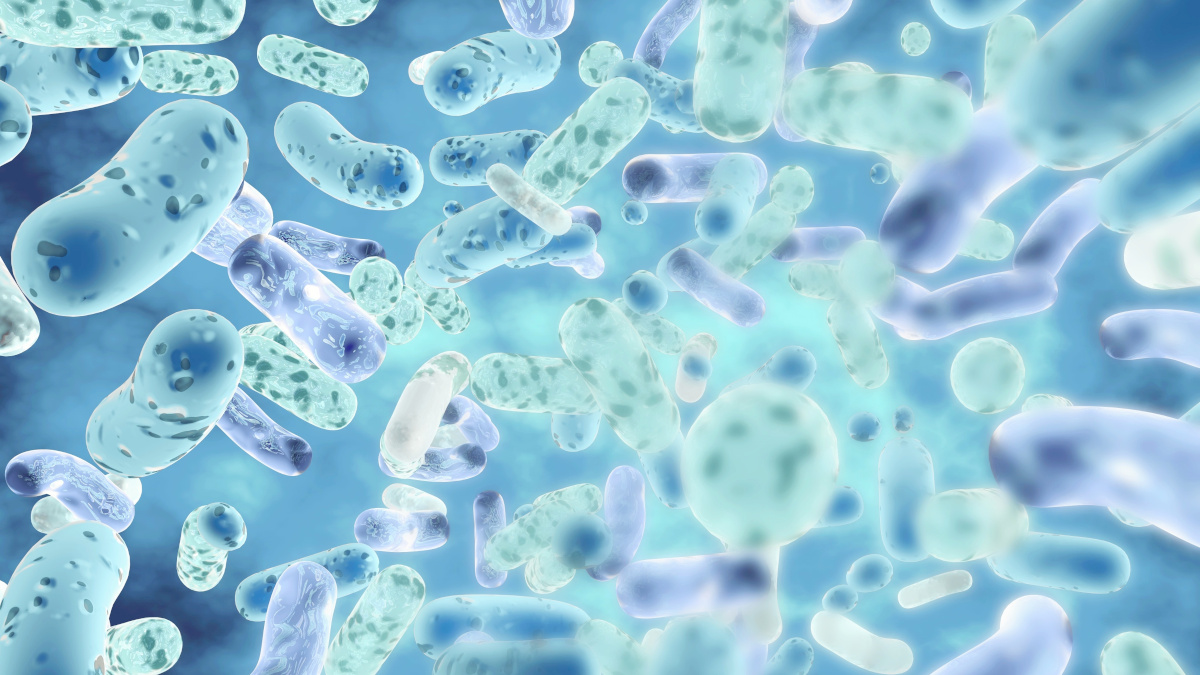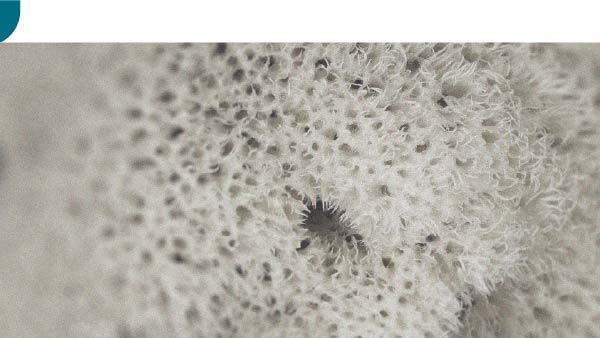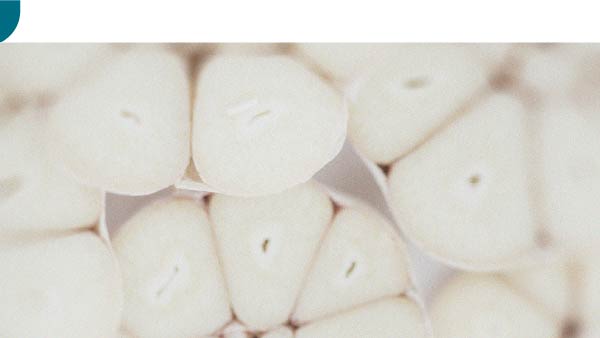Probiotics: can you take them all the time?
Can you take probiotics continuously, or is it better to have regular breaks? Read on for the answers.

Quick recap on the gut microbiota
It has been attracting huge interest in recent years as scientific understanding of how it works and what role it plays in the body has improved: the gut microbiota is a colony of microorganisms which have a symbiotic relationship with the body (1).
Consisting of an average 1013 micro-organisms, our gut microbiota, also known as gut flora, has as many organisms as the body has cells! There are up to a thousand species, predominantly bacteria, with the highest concentrations found in the colon (2).
Like fingerprints, each of us has our own unique gut microbiota, though research suggests there is a base of bacterial strains common to everyone.
And the most remarkable thing is that this microbiota starts to form at birth. Initially, it’s aerobic bacteria (enterococci, staphylococci, etc.) that colonise the gut and consume the oxygen there, enabling subsequent colonisation by anaerobic bacteria (Bacteroides, Clostridum, Bifidobacterium, etc.).
The qualitative and quantitative development of the gut flora will then be determined by a range of factors including dietary diversity, genetics, level of hygiene, type of medical treatment received, fluctuations in sex hormones, and diseases (3).
These microorganisms play a crucial role in our health. They enable fermentation of non-digestible food residues, facilitate nutrient uptake, are responsible for breaking down a number of carbohydrates (starch, cellulose, polysaccharides, etc), help synthesise certain vitamins, regulate metabolic pathways, ensure good intestinal immune system function, etc. (4)
So as you can see, our gut flora constitutes a veritable powerhouse, without which our bodies would not function properly!
Probiotics: health-friendly bacteria and yeasts
As knowledge of the gut microbiota improved, researchers and manufacturers set about culturing these same bacteria and yeasts that populate the gut in order to develop what are now termed probiotics ( or microbiotic supplements) (5).
Probiotics are actually cultures of microorganisms (Bifidobacterium, Lactobacillus, Lactococcus, saccharomycetes, etc.) which, to varying degrees, are naturally present in fermented foods (kefir, yogurt, lactofermented vegetables , etc.), and which are also available in the form of dietary supplements.
There are two types of these supplements:
- mono-strain microbiotic supplements which contain a single strain of a specific microorganism;
- and multi-strain formulations in which several different strains are combined.
Once ingested, these microorganisms travel to the gut flora to join the existing microorganism population.
But the question is ... should you take probiotics continuously or leave a break between one course and the next?
Taking a a few weeks’ break (1 month, for example) between courses of probiotics is generally recommended in order to allow the gut to regulate itself and perform its functions unaided (6) - especially if you’re taking two consecutive courses of the same strain.
At the same time, there’s nothing to prevent you from taking probiotic supplements throughout your life. In this case, however, we’d recommend extending the breaks between one course and the next to prevent your gut from getting too ‘lazy’.
How long should a course of probiotics last?
2 weeks, 3 weeks, 3 months, even 6 months: the length of a course of probiotics depends on the objective, the season, the health condition of the individual and the recommendations of the laboratory which cultured the microorganism strains.
Our article on the subject will help you decide which duration to choose, depending on your needs: How long should a course of probiotics last?
If you suffer from recurrent, troublesome gut problems, perhaps make an appointment with your doctor to arrange further investigations. And try to modify your diet to make it as healthy and balanced as possible.
Which probiotic supplements should you take?
Bacillus subtilis
Naturally present in the gut flora, the bacteria Bacillus subtilis is remarkable in being able to formspores resistant to extreme conditions of heat, dryness and radiation (7).
The supplement Bacillus subtilis contains an active strain, with 3 billion bacteria per capsule, encapsulated in such a way as to guarantee the microorganisms’ survival as far as the gut.
Lactobacillus gasseri
A type of lactic bacteria from the Lactobacillaceae family, Lactobacillus gasseri is naturally present in oral, vaginal and gut microbiota, where it plays a protective role(8).
The supplement Lactobacillus gasseri is designed to reach the gut flora intact thanks to its gastro-resistant capsules (which do not dissolve in the stomach), and contains 6 billion microorganisms per capsules.
Derma Relief
The microbiotic formulation Derma Relief contains four strains of lactic bacteria: Lactobacillus casei (naturally present in dairy products and in the human digestive system), Lactobacillus rhamnosus (a form of bacteria present in fermented dairy products and in gut and vaginal microbiota), Lactobacillus plantarum (present in sourdough, dairy products, lacto-fermented vegetables, and in gut flora) and Bifidobacterium lactis (another type of lactic bacteria present in gut flora) (9-10).
This supplement also contains vitamin B2 which helps maintain healthy skin, and vitamin C, which plays a role in the formation of collagen.
Lactoxira
Meanwhile the synergistic supplement Lactoxira combines 8 different strains of bacteria from three families: Bifidobacterium (longum, bifidum and lactis), Lactobacillus (plantarum, casei, brevi and salivarius) and Lactococcus (lactis) (11).
These 8 bacterial strains are found naturally in human gut flora and have been extensively studied in order to better understand their role in a number of the body’s processes.
Full Spectrum Probiotic Formula
By taking a comprehensive microbiotic formulation such as Full Spectrum Probiotic Formula, you can obtain the benefits of 20 selected strains of Lactobacillus, Bifidobacterium, Lactococcus, etc. combined in a single, powerfully-dosed capsule which provides 36 billion CFU a day.
It’s one of the broadest spectrum microbiotic formulations available.
References
- https://www.inserm.fr/dossier/microbiote-intestinal-flore-intestinale
- THURSBY, Elizabeth et JUGE, Nathalie. Introduction to the human gut microbiota. Biochemical Journal, 2017, vol. 474, no 11, p. 1823-1836.
- ISOLAURI, Erika. Development of healthy gut microbiota early in life. Journal of paediatrics and child health, 2012, vol. 48, p. 1-6.
- GÉRARD, Philippe et BERNALIER-DONADILLE, Annick. Les fonctions majeures du microbiote intestinal. Cahiers de Nutrition et de Diététique, 2007, vol. 42, p. 28-36.
- WILLIAMS, Nancy Toedter. Probiotics. American Journal of Health-System Pharmacy, 2010, vol. 67, no 6, p. 449-458.
- VITTON, Véronique et DAMON, Henri. Probiotiques en pratique dans le syndrome de l’intestin irritable: des réponses scientifiques à des questions pratiques. Hépato-Gastro & Oncologie Digestive, 2020, vol. 27, no 6, p. 605-612.
- KOVÁCS, Ákos T. Bacillus subtilis. Trends in microbiology, 2019, vol. 27, no 8, p. 724-725.
- SELLE, Kurt et KLAENHAMMER, Todd R. Genomic and phenotypic evidence for probiotic influences of Lactobacillus gasseri on human health. FEMS microbiology reviews, 2013, vol. 37, no 6, p. 915-935.
- NOUROUZI, JAMILEH, MIRZAII, M., et NOROUZI, M. Study of Lactobacillus as probiotic bacteria. 2004.
- LIN, Meei-Yn et CHANG, Fen-Juan. Antioxidative effect of intestinal bacteria Bifidobacterium longum ATCC 15708 and Lactobacillus acidophilus ATCC 4356. Digestive diseases and sciences, 2000, vol. 45, no 8, p. 1617-1622.
- KIMOTO-NIRA, Hiromi, MIZUMACHI, Koko, NOMURA, Masaru, et al.Lactococcus sp. as potential probiotic lactic acid bacteria. Japan Agricultural Research Quarterly: JARQ, 2007, vol. 41, no 3, p. 181-189.
1 Days
Original product and fast delivery
Original product and fast delivery. I haven't started it yet, but will do soon.
Vincenza Catania
4 Days
Good quality
Good quality. Good service.
Leonel Guzman
6 Days
Top!!!!!!!!
Top!!!!!!!!
Michael
8 Days
Excellent!
Products are great and delivered fast!
PARDINI Debora
9 Days
From order to receive the product
From order to receive the product, the process is smooth & fast. It’s good to customers.
WONG Mei Ling
10 Days
Fast delivery
very quick delivery to italy. product is good.
Customer
11 Days
Prompt delivry !!👍
Prompt delivry !!👍
SWEET Christine
11 Days
Good delivery and flawless quality
AS far as delivery and the visual quality are concerned, Supersmart is excellent. I will not comment on the efficacy of the products themselves, since that is only possible over a longer period and in a large customer base compared to people who do not consume a particular product.
Roger De Backer
12 Days
Perfect services
Perfect services, perfect support, great articles about products
Michaela Alali Beitlová
13 Days
Great experience and effective supplements
I’ve purchased many types of supplements from this company over the course of years to treat a few issues, and I’m satisfied with their quality. After using them consistently for a period of time, I can say they met my expectations and I could feel real health benefits that built up over time. Deliveries are always quick. I recommend this company to anyone looking for high-quality supplements.
Giordano
13 Days
Es hat alles gestimmt
Es hat alles gestimmt. Top
marina thieme
16 Days
Great product
Great product, but still evaluating its effectiveness. Highly recommended. Super efficient delivery.
Chalise
20 Days
Quality products
Quality products , efficient and effective customer service. You can’t ask more
CLaudia
26 Days
Good quality product and customer service.
So far, I'm liking this product, and the customer service was very good.
ELZL
33 Days
The products I use are excel·lent
The products I use are excel·lent
ROSAS Josep Maria
of experience
your money back
##montant## purchase



